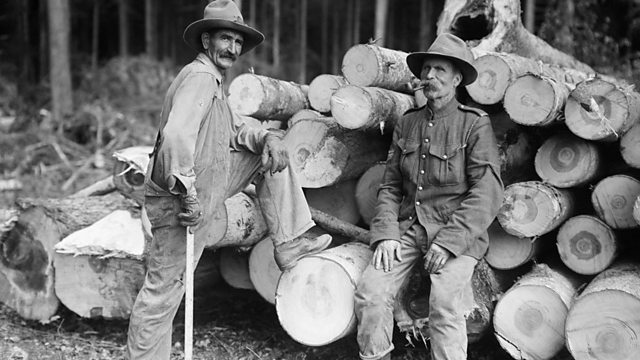The New Forest, Lyndhurst: Britain’s Timber Crisis
Importing Canadian lumbermen to replace British labourers
World War One depended on wood. It propped up mines, built railways and prevented soldiers from sinking into the Flanders mud. But in 1916, the UK wasn’t producing enough timber and imports were threatened by attacks on shipping.
The solution was to import lumbermen from Canada and elsewhere to replace British labourers who had gone to fight abroad. The first Canadian lumberjacks in the UK arrived in Lyndhurst in April 1916. Their productivity was tremendous – by 1918 some were working 90 hours a week and often throughout the night to fulfil urgent orders. Women supported the efforts of the thirty thousand-strong Forestry Corps.
To reduce Britain’s dependence on imports the government created the Forestry Commission in 1919 to oversee the planting of new forests. Whereas only 5% of the UK was forested before the war, today the figure is 10% for England alone. Forests in places like Wareham in Dorset and the Breckland in East Anglia are the direct result of post-war planting.
Location: Lyndhurst, Hampshire SO43 7GQ
Image: Members of the Canadian Forestry Corps by a pile of felled trees near Conches-en-Ouche (31 May 1917), courtesy of IWM
Duration:
This clip is from
Featured in...
![]()
Βι¶ΉΤΌΕΔ Radio Solent—World War One At Βι¶ΉΤΌΕΔ
Places around the Solent that tell a story of World War One
More clips from World War One At Βι¶ΉΤΌΕΔ
-
![]()
The loss of HMY Iolaire
Duration: 18:52
-
![]()
Scotland, Slamannan and the Argylls
Duration: 07:55
-
![]()
Scotland Museum of Edinburgh mourning dress
Duration: 06:17
-
![]()
Scotland Montrose 'GI Brides'
Duration: 06:41







